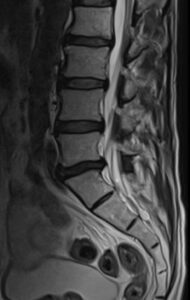
Dr. Petya Stefanova
Teacher
Assistant at the Faculty of Medicine at Sofia University and resident physician in Neurology at Sofiamed University Hospital.
Questions
Summaries
Videos
Audios
Why is the Mingazzini Strumpel test, also known as the Latent Paresis test, used in neurological examination?
January 3, 2024
What is the meaning of the term quadriplegic?
January 3, 2024
What is the meaning of the term monoparesis?
January 3, 2024
What is the primary difference between paralysis and plegia?
January 3, 2024
Which cranial nerves structures receive unilateral innervation from the motor cortex via the corticobulbar tract?
January 3, 2024
Where does the pyramidal decussation of the corticospinal tract primarily occur?
January 3, 2024
Why are benzodiazepines not a medication of first choice for sleep disorders? (Multiple choice)
December 30, 2023
Sleep hygiene is important in treating and preventing insomnia.
December 30, 2023
How does REM (Rapid Eye Movement) sleep typically change with aging?
December 30, 2023
Parkinson’s Disease Differential Diagnosis Questionnaire
October 18, 2024
Role of the Direct and Indirect Pathways in the Extrapyramidal System: Balancing Motor Control
October 14, 2024

The Unified Parkinson’s Disease Rating Scale (UPDRS)
October 11, 2024
Lewy Body Dementia with Parkinsonism versus Parkinson’s Disease
October 11, 2024

Protective Factors for Parkinson’s Disease: Physical Activity, Smoking, and Caffeine
October 6, 2024
Alpha-Synuclein vs. Tau Protein: A Comparative Overview
October 6, 2024
Diet Recommendations for Patients with Multiple Sclerosis
August 6, 2024
Wallenberg Syndrome (Lateral Medullary Syndrome)
August 6, 2024
No videos found
Fake Smiles, Real Damage: How Digital Joy Breeds Fear and Anger
May 3, 2025
Understanding Neuropsychological Evaluations: What to Expect
February 25, 2025
Невропсихологическо изследване – индикации, провеждане и резултати
February 24, 2025
Невропсихологическо изследване – индикации, провеждане и резултати
February 24, 2025





